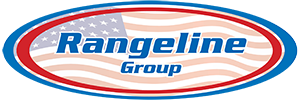Line Stopping FAQ
Our line stopping and line plugging services mean that we are able to offer our clients some of the most versatile options in the industry.
What is Line Stopping?
Line stopping is a temporary way to stop the flow through a pipeline in order to carry out repairs, add new pipeline to the system, modify or maintain current systems, or create flow bypasses to go around damaged or obsolete parts of a line. These become especially important in case of emergency line breaks, because they allow us to quickly and efficiently stop the flow to the damaged section without affecting the service to all other sections of the pipeline.
When is Line Stopping Used?
There are a variety of uses for line stops and line plugging in general. The most common is repairs. Whether these repairs are scheduled or come as the result of an emergency break in the line, line stops allow us to get in, fix the problems, and get out again without too much interruption of service. The fantastic thing about these is that once the (line stopping) fitting is installed, it can be used again and again as situations arise. If you’re working on repairing an old system, a line stop can be an extremely lucrative investment.
Where?
Line stops can be used on almost every form of pipe carrying nearly any product that you can imagine. We currently work with Castile and Ductile Iron, PVC, Asbestos Cement, cylinder and non cylinder concrete, stainless steel, steel and copper pipe. These pipelines carry everything from potable, reclaimed and chilled water, to sewage, gasoline, jet fuel and natural gas. This is usually the last step that you can take as part of a (line stopping) procedure before having to shut down and drain an entire system, which can be costly, especially in a busy city environment.
Why Should I Use Line Stopping?
There are numerous reasons that choosing a line stop over a valve insertion could be useful. Most of our clients use them for things such as new construction, bypassing old or damage systems, inspecting pipes, installing things like flow meters or simply opening a system up to carry out a little bit of custom engineering. These can be installed on nearly any type of pipe, whether or not it is currently under pressure, meaning that business as usual can carry on during installation and during whatever work you may or may not be planning.
How is it done?
First, we install and then test a line stop fitting. Once the testing is completed, a temporary valve is installed and we tap the line. Once the line has been tapped, we can install the line stop actuator and the stopping head. We then blow down the section of pipe for a safe working environment. Now, the piping modifications can be preformed. Once this is work is complete, we remove the Line Stoppper and we can install a completion plug and remove our temporary valve. Once installed, the line stop fitting can be used again and again as needed.
Here at Rangeline, we employ only the most experienced technicians in the industry to provide you with the best line stopping and tapping services in the field.
